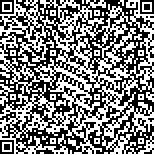穆俊林,宋景贵,李六一,杜好瑞,张宁,刘涛,张朝辉,张萍,张帆,费鹏鸽.放松治疗对卒中后抑郁患者睡眠及心率变异性的影响[J].中华物理医学与康复杂志,2016,38(9):690-693
扫码阅读全文

|
| 放松治疗对卒中后抑郁患者睡眠及心率变异性的影响 |
|
| |
| DOI: |
| 中文关键词: 放松治疗 卒中后抑郁 睡眠 心率变异性 |
| 英文关键词: Relaxation treatment Post-stroke depression Sleep Heart rate variability |
| 基金项目:国家自然科学基金资助项目(81471349);新乡市科技创新平台建设项目(CP1305) |
|
| 摘要点击次数: 4995 |
| 全文下载次数: 6690 |
| 中文摘要: |
| 目的探讨放松治疗(RT)对卒中后抑郁(PSD)患者睡眠及心率变异性(HRV)的影响。 方法采用随机数字表法将82例PSD患者分为观察组及对照组,每组41例。2组患者均给予常规治疗(包括降颅压、稳定血压、抗血小板聚集、脑细胞保护、活血化瘀及对症支持治疗等),观察组患者在此基础上辅以RT训练。于治疗前、治疗6周后检测2组患者多导睡眠图(PSG)及HRV,同时对2组患者结果数据进行比较。 结果治疗前2组患者PSG及HRV各项指标组间差异均无统计学意义(P>0.05);与组内治疗前比较,观察组治疗后其PSG觉醒次数[(3.52±1.43)次]减少,睡眠效率[(74.2±4.22)%]及总睡眠时间[(382.1±25.3)min]增加,睡眠潜伏期[(40.5±14.3)min]及快眼动睡眠潜伏期[(89.2±8.81)min]缩短,浅睡眠比例[(65.6±7.93)%]减少,深睡眠比例[(14.7±3.64)%]及快眼动睡眠比例[(19.7±2.88)%]增加;HRV检测指标低频成分(5.18±0.96)降低,高频成分(5.21±0.60)升高,低频/高频比值(0.99±0.31)明显降低;对照组治疗后仅见觉醒次数[(5.22±1.97)次]减少、总睡眠时间[(336.7±29.7)min]增加,HRV各项指标治疗前、后均无显著变化;治疗后观察组PSG及HRV各项指标与对照组间差异均具有统计学意义(均P<0.05)。 结论在常规干预基础上辅以RT治疗,可进一步改善PSD患者睡眠障碍及HRV,对提高康复疗效及抑制并发症发生具有积极作用,该疗法值得临床推广、应用。 |
| 英文摘要: |
| Objective To explore the effect of relaxation treatment (RT) on the sleep quality and heart rate variability (HRV) of patients with post-stroke depression (PSD). MethodsEighty-two PSD patients were recruited and randomly divided into a study group (n=41) and a control group (n=41) using a random number table. Both groups were given conventional medication (reducing the intracranial pressure, stabilizing blood pressure, anti-platelet aggregation, protecting brain cells, promoting blood circulation and relieving symptoms), but the study group was additionally given RT. HRV was measured and polysomnography (PSG) was conducted before and after the six weeks of treatment. ResultsThere was no significant difference between the two groups in average PSG or HRV results before the treatment. PSG showed that after treatment the study group had fewer awakenings, greater sleep efficiency, longer total sleeping time, shorter sleep latency, shorter rapid eye movement sleep latency, shorter duration of shallow sleep, and longer duration of deep sleep and rapid eye movement sleep on average than the control group. Moreover, the HRV testing indicated a significant increase in the high frequency (HF) variability, significant decrease in the low frequency (LF) variability and so a decrease in the ratio of LF to HF variability in the study group after the treatment. No significant changes were observed in the control group except a significant decrease in awakening episodes and a significant increase in their total sleeping time. There were significant differences in the PSG and HRV results between the two groups after treatment. ConclusionsRT can significantly relieve sleep disorder and improve HRV in PSD patients on the basis of routine treatment. |
|
查看全文
查看/发表评论 下载PDF阅读器 |
| 关闭 |
|
|
|